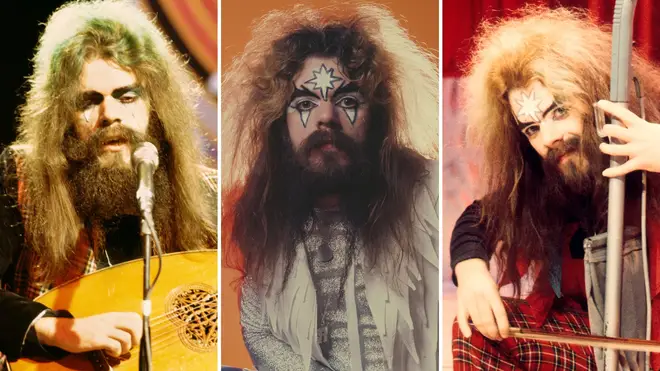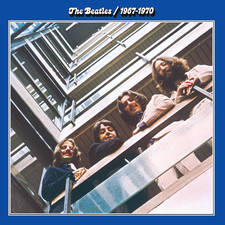Wizzard facts: Members, songs, two drummers and breakup of Roy Wood's band explained
19 April 2023, 10:08 | Updated: 12 April 2024, 10:15

Like Slade, Wizzard are for life, not just for Christmas.
Listen to this article
Wizzard are best remembered these days for their fabulous Christmas number single, 'I Wish it Could be Christmas Everyday'.
But just like fellow seasonal hitmakers Slade, they were so much more than that.
- 'I Wish It Could Be Christmas Everyday' by Wizzard: The making of 1973's other Christmas cracker
- What is Wizzard's Roy Wood up to now?
- Listen to the Gold Greats Live Playlist on Global Player
While 'I Wish It Could Be Christmas Everyday' stalled at number four, Wizzard actually scored a pair of chart-toppers among their six top ten singles, and released two top 30 albums.
Led by the obscenely talented Roy Wood, how much do you know about one of glam rock's most colourful and vibrant bands?
How did Wizzard spawn from The Move and Electric Light Orchestra? Did they really have two drummers? What was their connection to Emmerdale Farm? Read on to find out.
When did Wizzard form and who were all their members?

Wizzard formed in 1972 by Roy Wood, who had already had a couple of lives in music by that point.
Wood had been the guitarist and one of the lead singers of 1960s psychedelic group The Move, who had a run of top 20 UK singles. He wrote all the band's hits, including their Summer of Love anthem 'Flowers in the Rain'.
While The Move were still going, Wood formed Electric Light Orchestra in 1970 with his bandmates Jeff Lynne and Bev Bevan. Once their contract was up, The Move formally split in 1972.

The Move - Flowers In The Rain 1967
Wood only featured on ELO's self-titled 1971 debut (released in the US the following year as No Answer after a telephone message mixup).
Despite being the driving force behind the band, Wood left during the recording of ELO 2, due to reported issues with the band's manager Don Arden and a desire to avoid any potential future conflict with Lynne.
Wood took Bill Hunt (keyboard and French horn) and cellists Mike Edwards and Hugh McDowell along with him, as well as former Move bandmate Rick Price, two drummers Charlie Grima and Keith Smart, plus saxophonists players Mike Burney and Nick Pentelow.

If the name Pentelow sounds familiar, that's because he's the son of Emmerdale Farm acting legend Arthur Pentelow.
Wizzard started with a bang, making their live bow at Wembley Stadium on the bill of The London Rock and Roll Show on June 4, 1972. Their second gig was at that month's Reading Festival.
They catapulted into the top 10 with the single 'Ball Park Incident' and were immediately a colourful fixture on Top of the Pops.
Wait, did you say Wizzard had TWO drummers?

Wizzard - See My Baby Jive (TOTP 1973)
Yep. While many bands have two or more guitarists, most usually stick to just having one person wielding the sticks.
Wizzard were one of the notable exceptions, with Charlie Grima and Keith Smart both doing their bit behind their respective kits.
For the record, other bands who famously have had two drummers included The Allman Brothers Band, The Grateful Dead, Adam and the Ants, King Crimson, The Doobie Brothers, Slipknot and Rialto.
What were Wizzard's biggest songs?

Wizzard - I Wish It Could Be Christmas Everyday (Official Music Video)
Wizzard only released two albums during their lifetime: 1973's Wizzard Brew and 1974's Introducing Eddy and the Falcons.
A third album, Main Street, would remain unreleased till 2000.
Wizzard's biggest songs were:
- Ball Park Incident
- See My Baby Jive
- Angel Fingers (A Teen Ballad)
- I Wish It Could Be Christmas Everyday
- Rock 'n' Roll Winter (Loony's Tune)
- This Is the Story of My Love (Baby)
- Are You Ready to Rock
When and why did Wizzard split up?

Despite Wizzard's chart-topping hits and perennial Christmas classic, they only lasted a few short years before they broke up in autumn 1975.
The band had a successful UK run but failed to make an impact in the US, and the group's sprawling lineup and propensity to spend an age in the studio was costing their label a LOT of money.
"There is no doubt that Roy Wood is one of the nicest, kindest, most generous men on the planet," said bassist Rick Price years later.
"There is no doubt that he is one of the most talented and under-rated songwriters ever, but his attitude to money in 1973 made me look like Donald Trump and Bill Gates rolled into one."

Wizzard - Angel Fingers (TOTP 1973)HD
He added: "When we finished recording 'Angel Fingers' it was rumoured that we had spent more time in the studio than Paul McCartney had with the whole of the Band On The Run album.
"Whether it was true or not, this meant that most of the record company's money was spent in studio time and that the members of the band had to rely on live touring work for their income.
"A couple of tours in the UK and one tour of the USA were not enough to ensure regular wages for the band. One by one the band members found other, more lucrative, things to occupy their time."
So when 'Rattlesnake Roll', the lead single from their planned third album, failed to chart, the label decided against releasing Main Street, a jazz-rock set that was originally planned to be the second disc alongside the more commercial Introducing Eddy & The Falcons songs.
Wizzard were no more.
Who were Wizzo Band?

Sneakin'
With the disintegration of Wizzard, Roy Wood wasn't quite ready to go completely solo.
He and Price stuck together for Wizzo Band, being joined by Bob Wilson (trombone), Billy Paul (sax, Paul Robbins (keyboards), Graham Gallery (bass) and Dave Donovan (drums).
They only released one album, Super Active Wizzo, before Wood went on to record under his own name and with an assortment of other players.














